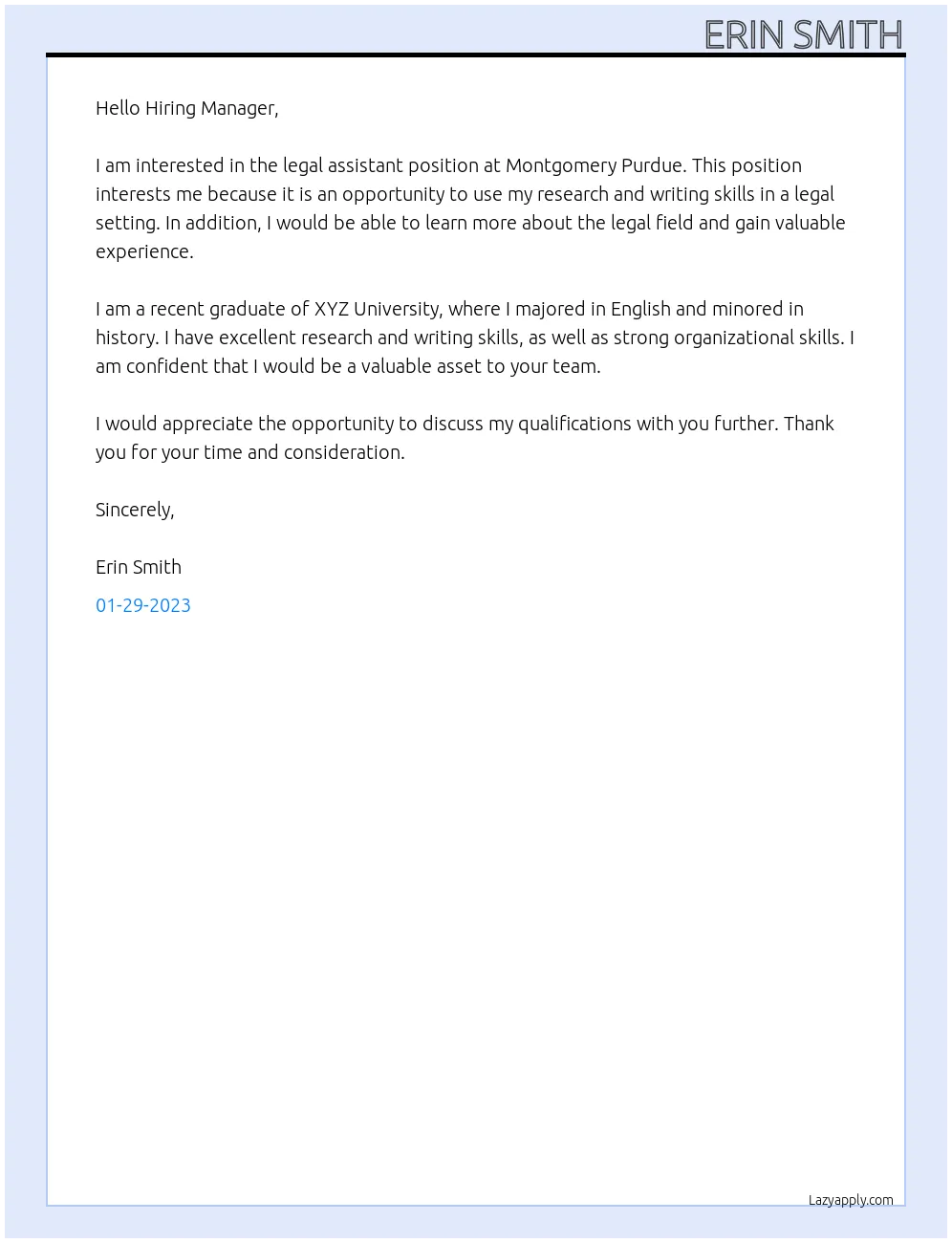What is a Legal Aid Cover Letter
A legal aid cover letter is a crucial document that accompanies your application for legal aid services. Its primary purpose is to provide a concise and compelling overview of your situation, demonstrating your need for legal assistance and eligibility for the program. This letter serves as your initial introduction to the legal aid provider, allowing you to present your case in a clear, organized, and persuasive manner. A well-crafted cover letter significantly increases your chances of securing legal aid, as it provides the provider with essential information to assess your application effectively.
The Importance of a Strong Cover Letter
A strong legal aid cover letter is not merely a formality; it is a pivotal element in your application. It’s your first opportunity to make a positive impression and convey the urgency and validity of your need for legal help. A well-written letter can differentiate your application from others and highlight your eligibility. It allows you to succinctly explain your situation, demonstrating why you need legal aid and why you meet the program’s criteria. By effectively communicating the details of your case, your financial circumstances, and your legal issue, you increase your chances of being approved for legal aid.
Key Components of a Legal Aid Cover Letter
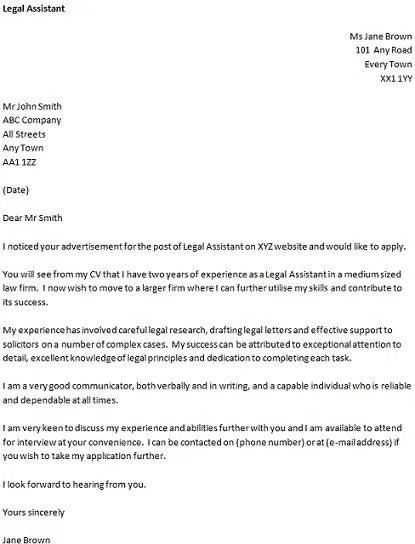
Several key components must be included in your legal aid cover letter to ensure it is complete and effective. These elements provide the legal aid provider with the necessary information to understand your case and assess your eligibility for assistance. Make sure to include each part to strengthen your application.
Applicant Information
Start with your full name, address, phone number, and email address. This information is crucial for the legal aid provider to contact you. Ensure all details are accurate and up-to-date, as this will be the primary method of communication throughout the application process. Double-check all contact information to prevent any delays or miscommunications.
Case Details and Legal Issue
Provide a brief overview of your legal issue, including the type of case (e.g., family law, housing dispute, employment issue) and the specific facts. Clearly state the legal problem and the steps you have already taken. Be precise and avoid unnecessary jargon, focusing on the essential elements of your situation. Include any relevant dates, names, and other pertinent details that help establish the context of your case.
Financial Situation and Eligibility
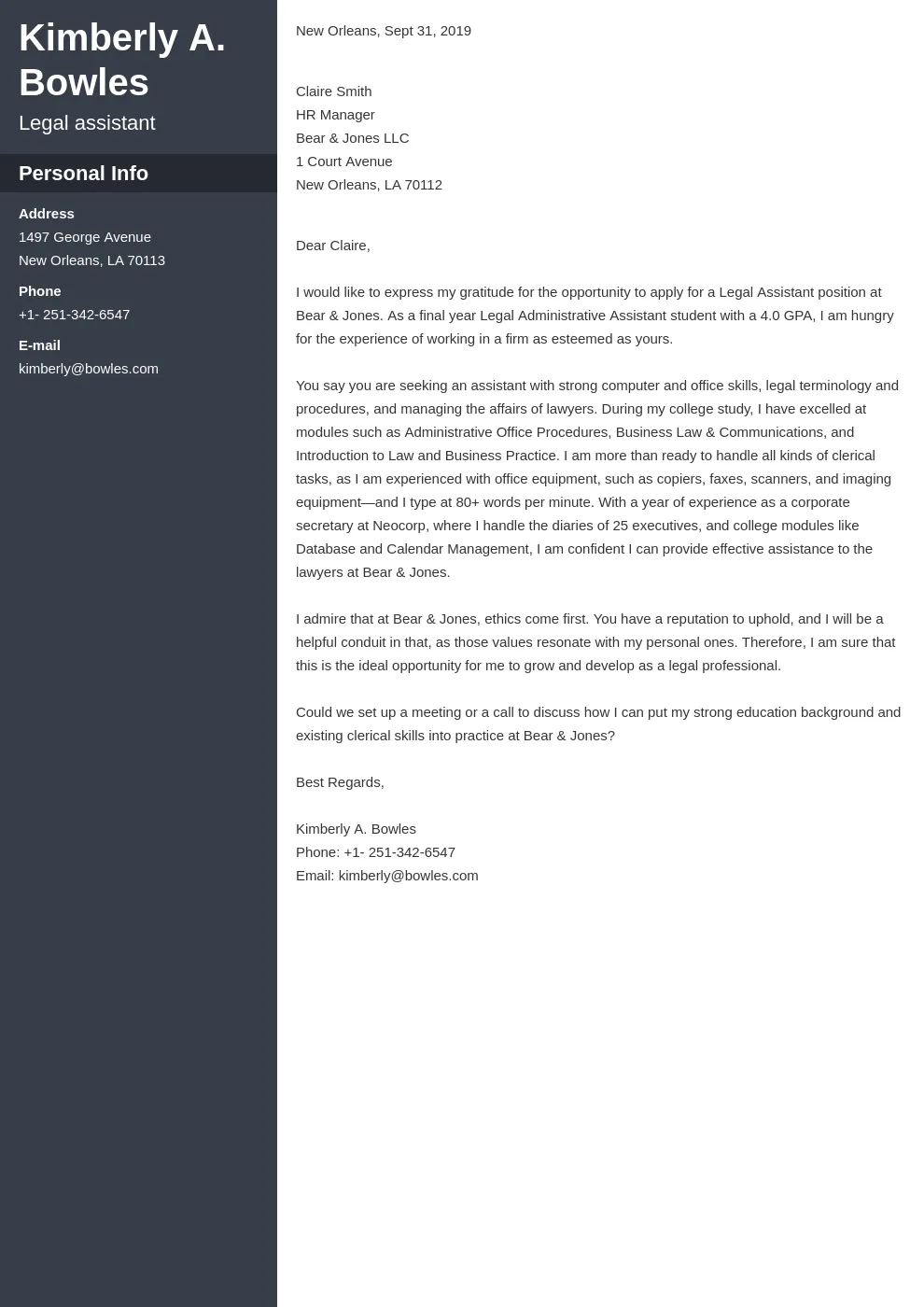
Clearly state your financial situation, including your income, assets, and any other relevant financial information. Legal aid programs have specific income and asset limits, so it’s crucial to provide an accurate representation of your financial standing. Include details about your employment, sources of income, and any significant financial obligations. Be transparent and honest in this section, as providing false information can lead to rejection of your application.
Why You Need Legal Aid
Explain why you cannot afford to hire a private attorney. Describe the impact the legal issue is having on your life and the potential consequences if you do not receive legal assistance. This section is critical as it highlights the urgency of your situation and the necessity of legal aid. Articulate how the legal issue affects your ability to work, maintain your housing, or care for your family.
How to Structure Your Cover Letter
A well-structured cover letter is easy to read and conveys information efficiently. Use a clear and logical format to present your case in a way that is easy for the legal aid provider to understand and assess. Organization and clarity are key to an effective cover letter.
Formatting and Tone
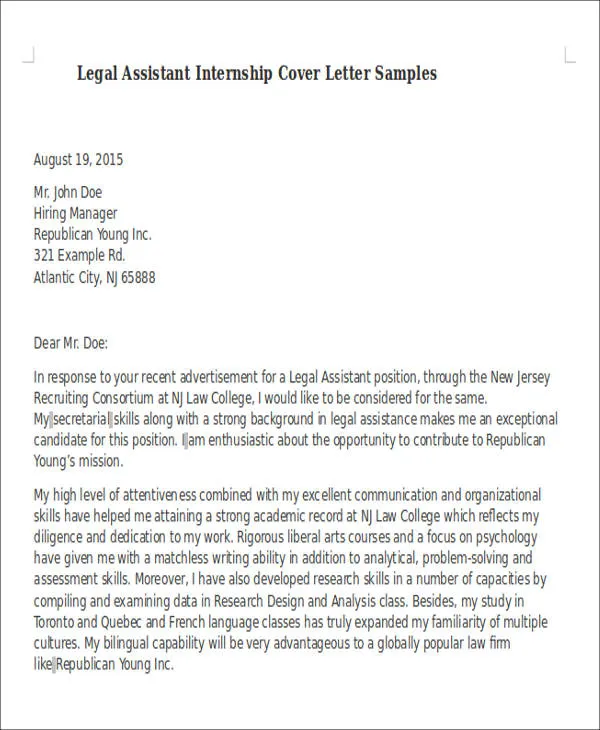
Use a professional and formal tone throughout the letter. Maintain a respectful and courteous approach. Keep the formatting consistent, with clear paragraph breaks and a readable font. Avoid slang or informal language. The overall impression should be one of seriousness and a genuine need for assistance. This will enhance your credibility and increase the likelihood of a favorable response.
Opening Paragraph
Begin with a concise statement of the purpose of your letter, mentioning that you are applying for legal aid. Briefly introduce yourself and the type of legal issue you are facing. State the name of the legal aid organization and any specific contact person, if applicable. This sets the stage for the rest of the letter.
Body Paragraphs
The body of your letter should provide details about your case, financial situation, and why you need legal aid. Each paragraph should focus on a specific aspect, such as the legal issue, your financial challenges, or the potential consequences of not receiving assistance. Use clear, concise language and avoid lengthy, convoluted sentences. Organize your thoughts logically and use transitions to connect your ideas effectively. Provide all the necessary information, but keep the letter brief and to the point.
Closing Paragraph

End with a clear request for legal aid and a statement of your willingness to provide additional information or documentation if needed. Thank the legal aid provider for their time and consideration. Include your contact information again for easy reference. Express your sincere hope for a positive response.
Tips for Writing a Winning Letter
Crafting a compelling cover letter involves more than just providing the required information. It requires attention to detail, careful phrasing, and a clear understanding of what the legal aid provider is looking for. Adhering to these tips can significantly improve your chances of success.
Proofreading and Editing
Carefully proofread your cover letter for any grammatical errors, spelling mistakes, or typos. These errors can undermine your credibility and detract from the overall impact of your letter. Edit the letter to ensure clarity and conciseness. Ask a friend or family member to read your letter and provide feedback. A fresh pair of eyes can often catch mistakes that you might miss.
Highlighting Relevant Information
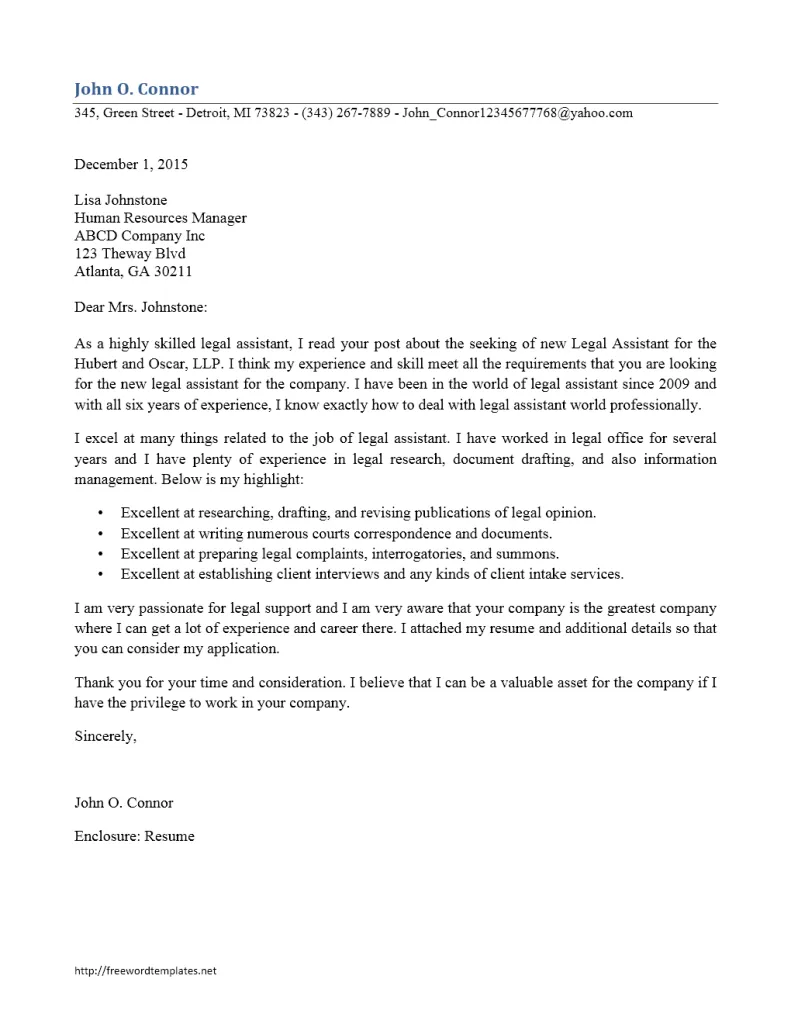
Focus on the information that is most relevant to your case and the criteria for legal aid eligibility. Do not include unnecessary details that could distract from the key points. Emphasize the critical aspects of your case, such as the legal issue, your financial hardship, and the potential consequences of not receiving assistance. Use bolding or underlining to highlight important information.
Being Clear and Concise
Use clear, concise language that is easy to understand. Avoid using complex legal jargon or overly formal language. Write in a straightforward manner, focusing on the essential information. Keep your sentences and paragraphs brief and to the point. The goal is to convey your message effectively and efficiently.
Common Mistakes to Avoid
Avoiding common mistakes is essential to ensure your legal aid cover letter is effective. These pitfalls can lead to rejection or delays in the application process. Awareness of these errors can help you write a stronger and more successful cover letter.
Not Providing Enough Detail
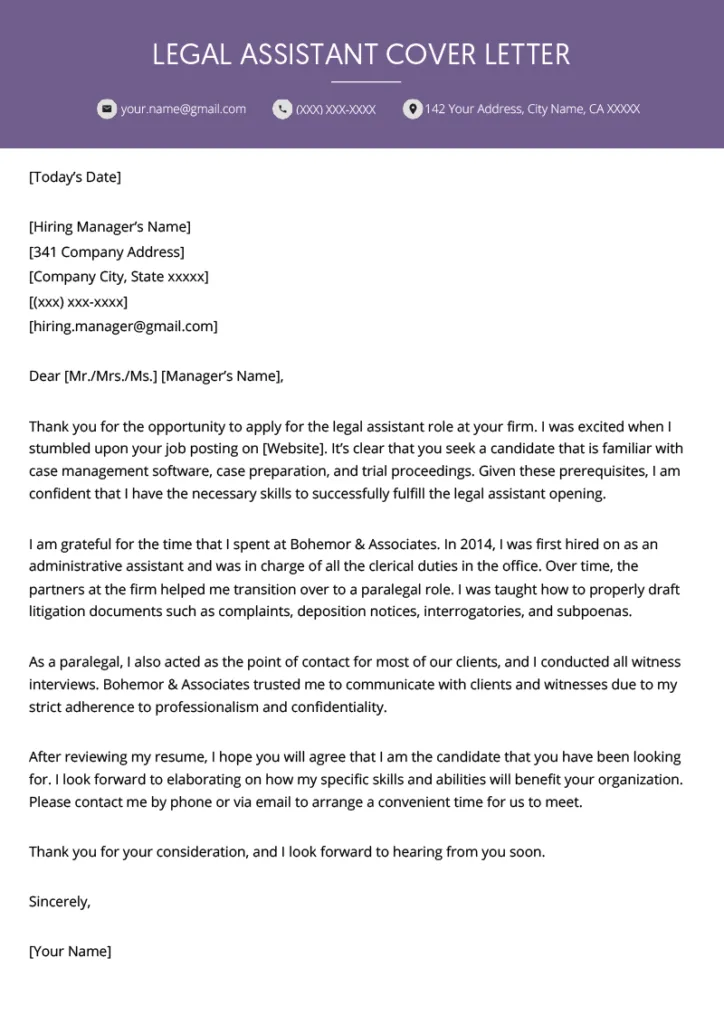
Failing to provide sufficient detail about your case, financial situation, and the reasons for needing legal aid is a common mistake. The legal aid provider needs comprehensive information to assess your eligibility. Be specific and thorough in your descriptions. Vague or incomplete information can lead to confusion and rejection.
Using Incorrect Formatting
Using an unprofessional or disorganized format can damage your credibility. Ensure your cover letter is properly formatted, with clear paragraph breaks, a readable font, and consistent spacing. Poor formatting can make your letter difficult to read, potentially leading to the legal aid provider overlooking important information. Adhere to standard formatting guidelines.
Ignoring Instructions
Failing to follow the specific instructions provided by the legal aid organization is a significant mistake. Always read the instructions carefully and adhere to all requirements. Ignoring the instructions can result in your application being rejected. Pay attention to the specific requirements, such as the required documents or the preferred format. Following instructions shows that you are able to follow the rules and helps create a favorable impression.
In conclusion, a well-crafted legal aid cover letter is essential for a successful application. By following these guidelines, you can create a compelling letter that effectively communicates your need for legal assistance, increases your chances of approval, and helps you navigate the legal system with the support you deserve.
